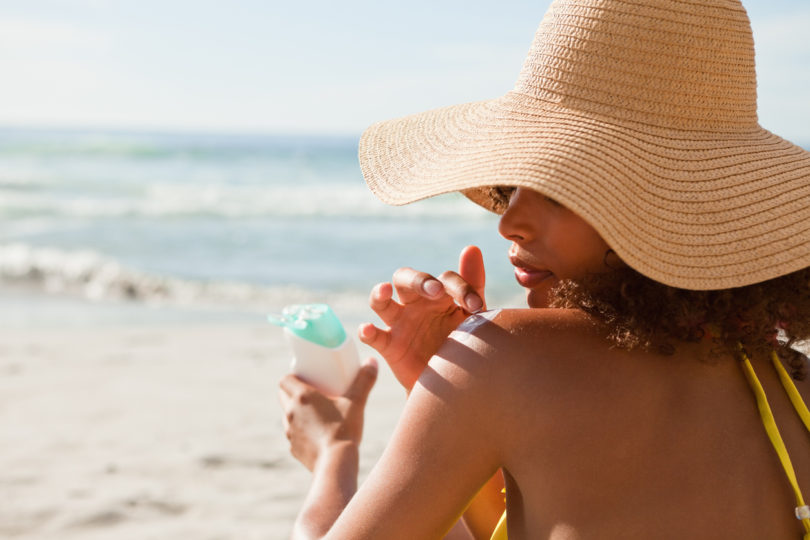Too much sun exposure can increase your skin cancer risk and hasten the signs of aging. Your activities, season, weather and altitude all can impact the level of risk, so it’s important to use the right kind of sunscreen to protect yourself.
In bright sun
If you’re outside in very little shade during the middle of the day, and it’s too hot to wear long pants and long-sleeved shirts, you need to protect your head, neck, arms and legs. Try a high SPF 100 water-resistant lotion such as Neutrogena. It’s not goopy, doesn’t interfere with sweating and protects skin well. Even with the high SPF there isn’t much “whiteness” associated with it, so you won’t look like Casper the Ghost. If you use a lower SPF such as 30-50, make sure you reapply every two hours.
Around town
For daily use around town, try an SPF 30, which is found in many moisturizers (such as Aveeno Positively Radiant). It doesn’t need to be water resistant, which is kinder to your pores. However, if you regularly sit on a park bench for an hour to have lunch and are exposed to the sun, you need a hat and SPF 50-100.
On the water
For sailors/boaters out on the water, remember that the sun is reflecting up at you in addition to coming down from the sky. Water-resistant sunscreen SPF 50 or higher is the best choice, or even an SPF 100. Use a similar level of protection if skiing at a high altitude on a sunny day. The reflection from the snow increases the intensity of ultraviolet rays hitting your skin.
How to apply sunscreen
As far as how much to apply, it will depend on how much skin is exposed and how much of an area you need to cover. Rather than worrying about specific amounts, focus on a uniform coating of the product and massage it in. Be careful to avoid skipping areas.
For babies
For infants, the primary protection should be hats, clothing and shade. If you have a child who might get some inadvertent exposure, try a thin layer of plain zinc oxide on exposed areas such as the cheeks and backs of the hands.



